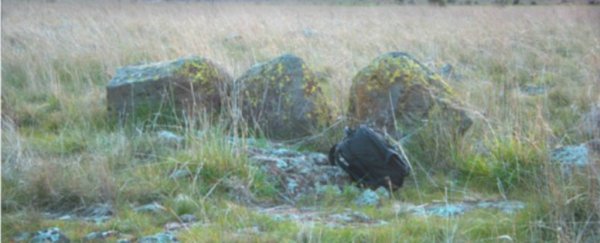Researchers are investigating Australia's Wurdi Youang stone arrangement, and say they have new evidence to suggest that it could be the world's first observatory.
Besides being the first physical evidence of humans using tools to observe the activity of the sky, the site could reveal exactly how Aboriginal astronomers tracked the Sun's movement throughout the year, and what these observations meant to their culture.
"Geologists and experts estimate it to be around 10,000 years old, and there are probably only around seven rock formations like this recorded in Victoria, and many of those have been destroyed," team member and site custodian Reg Abrahams told Melissa Davey at The Guardian.
"The aim of the research is to work out more accurately how old it is, and we're working to get it on the Australian national heritage list and possibly even have it classified as a world heritage site."
Unlike today's giant, telescope-driven observatories, ancient observatories consisted mainly of intricately placed blocks of stone like Stonehenge.
The Wurdi Youang arrangement is similar to Stonehenge, consisting of 90 blocks of carefully placed basalt, and is located 45 kilometres (28 miles) west of Melbourne by Mount Rothwell. The exact location has not been released.
The team, led by Duane Hamacher from Monash University, thinks the differently sized blocks are lined up in a way that tracks the winter and summer solstices, and Aboriginal astronomers would have used the surrounding landscape to figure out their placement.
"There are a few mountain ranges around the site, and if you get in certain positions within the stone arrangement you'll see three big mountains and the three large rocks which mimic them," Abrahams told The Guardian.
"The rocks range in size from knee-height to waist-height, and though some of them have moved out of place over the years it has largely remained untouched."
In 2006, the land title for the site was given to the Wathaurong Aboriginal Cooperative, which is now working with Humacher's team to accurately date the possible observatory.
The researchers estimate that the stones date to about 11,000 years ago, which makes the Wurdi Youang stone arrangement older than Stonehenge and the Egyptian pyramids - two sites that appear to have been used for astronomical study.
They also say they've found evidence of 'gilgies' - terraces used for farming - around the site, leading them to conclude that the arrangement was located near permanent villages. They also suggest that was used to keep track of the seasons using the movement of stars, possibly for agricultural reasons.
"They understand very well the motions of the Sun, the Moon, the planets, and the stars throughout the year and over longer periods of time," Hamacher told Hamish Fitzsimmons at ABC News.
"White Australians don't generally recognise that the history of colonialism has erased that, so what we're doing is helping the communities piece that information back together by working with communities."
The team has yet to publish their findings in a peer-reviewed study, but if they can verify that it was an ancient observatory from 11,000 years ago, it proves that this is the world's oldest observatory (that we know of), and suggests that Aboriginal tribes - which were thought to be nomadic - used sedentary agriculture long before we thought.
We can't wait to see what they find.
